As a testament to human resilience, Japan has revolutionised design & construction to contend with nature’s way of letting off some excess energy.
From seismic zoning and building codes to innovative architecture and engineering to ingenious strategies to mitigate seismic risks, this article will explore how Japan’s seismic history has impacted how buildings and infrastructure are designed and constructed in Japan and worldwide.
Japan has a positive, world-renowned reputation for its innovations relating to earthquake mitigation and earthquake-resistant architecture and technologies. With their long history of seismic events due to its unfortunate placement regarding tectonic plates, Japan has shown great skill and example in adapting and evolving to cope with nature’s powerful, earth-shattering quakes.
Japanese engineering and construction practices have gained international recognition, and their experience serves as valuable lessons to other seismic regions worldwide. Japan’s seismic resilience expertise has influenced efforts globally to enhance earthquake-resistant building practices. Engineers, architects, and governments are increasing efforts to protect infrastructure from natural and manmade disasters.
As countries endeavour to enhance their seismic hazard resilience, building and infrastructure practices have been substantially impacted by the advancements and adoption of more precise magnitude and intensity scales in Japan and worldwide.

The “Ring of Fire” and Plate Tectonics
Beneath and surrounding most of the boundary of the Pacific Ocean, in a horse-shoe-shaped belt, volcanic eruptions and earthquakes frequently occur. This phenomenon has been named the Ring of Fire or the Pacific Ring of Fire.
Plate tectonics causes collisions that result in a series of zones with high levels of tectonic activity. This results in independent volcanoes and earthquakes due to the Ring of Fire not being a single geological structure.
90% of the world’s earthquakes have occurred along the Ring of Fire over the past 10 000 years.
Japan’s geological setting leaves it very vulnerable to earthquakes and volcanic eruptions because it is located where numerous tectonic plates converge within the Ring of Fire. This has influenced Japan’s culture, history and approach to seismic risk management for centuries. Globally, the Ring of Fire affects many countries along its boundary. Understanding the Ring of Fire is essential for appropriate and effective worldwide seismic risk and mitigation efforts.
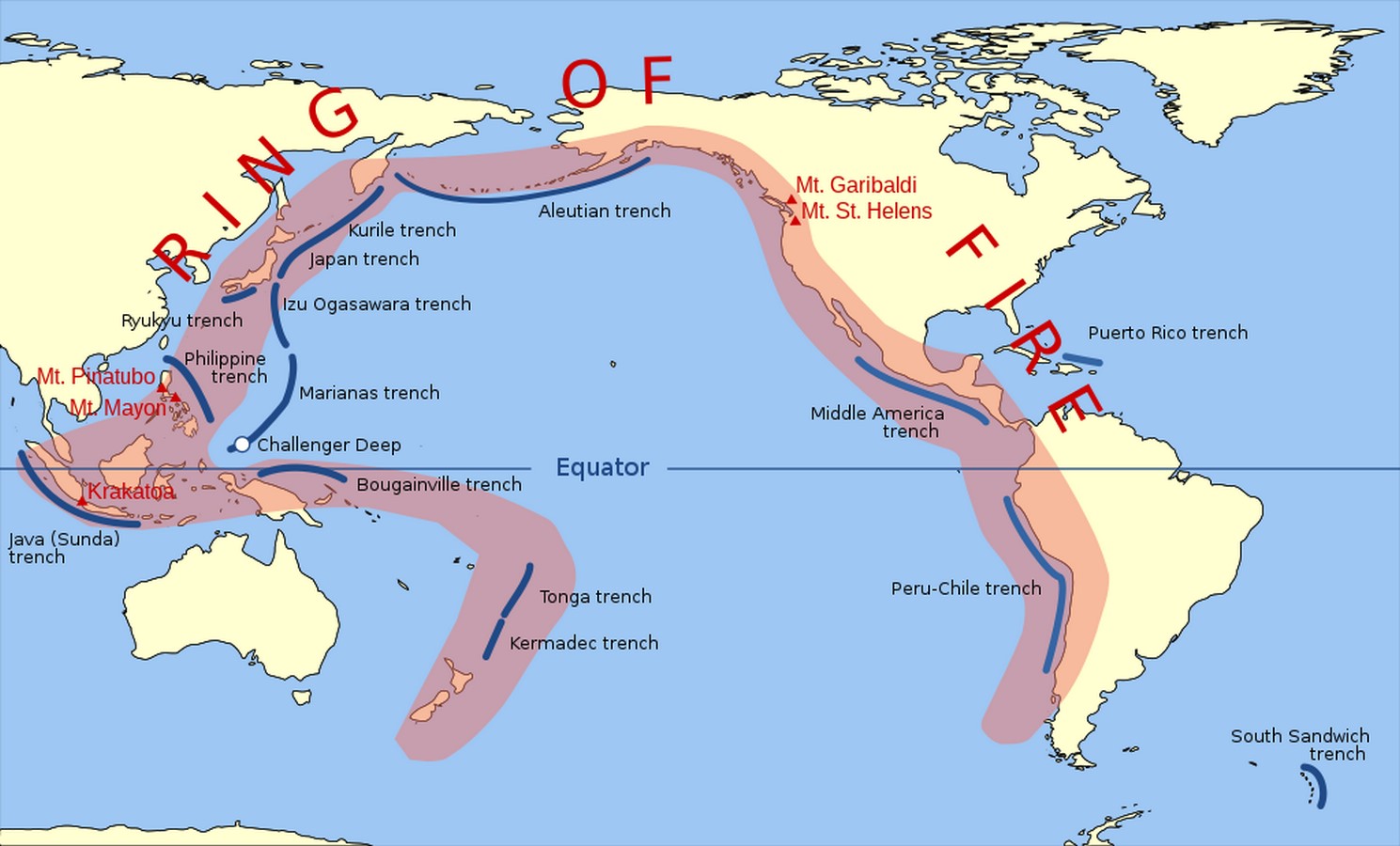
Historical Earthquake Context in Japan
The distinctive geography of Japan constantly exposes it to various environmental risks, including earthquakes, tsunamis, and volcanoes. Japan has written records of its earthquake experience from the past 1600 years.
In 1703, on December 31st, a strong earthquake with floods and fires in its aftermath killed approximately 150,000 people.
One of the most notable historic earthquakes that killed between 16 000 and 20 000 people hit Tokyo on November 11th, 1855.
On October 28th, 1891, the Nobi region was struck by an earthquake of magnitude 8, resulting in extensive damage where modern buildings and traditional houses collapsed, and 7 000 lives were lost.
The Great Kanto Earthquake of 1923, with a magnitude of 7.9, drastically devastated the cities of Yokohama and Tokyo. Collapsing buildings, fires and a 10 to 12m high tsunami caused around 105 000 deaths, where 40 000 victims were never found. The resulting major economic losses were equivalent to 30% of Japan’s GDP in 1923.
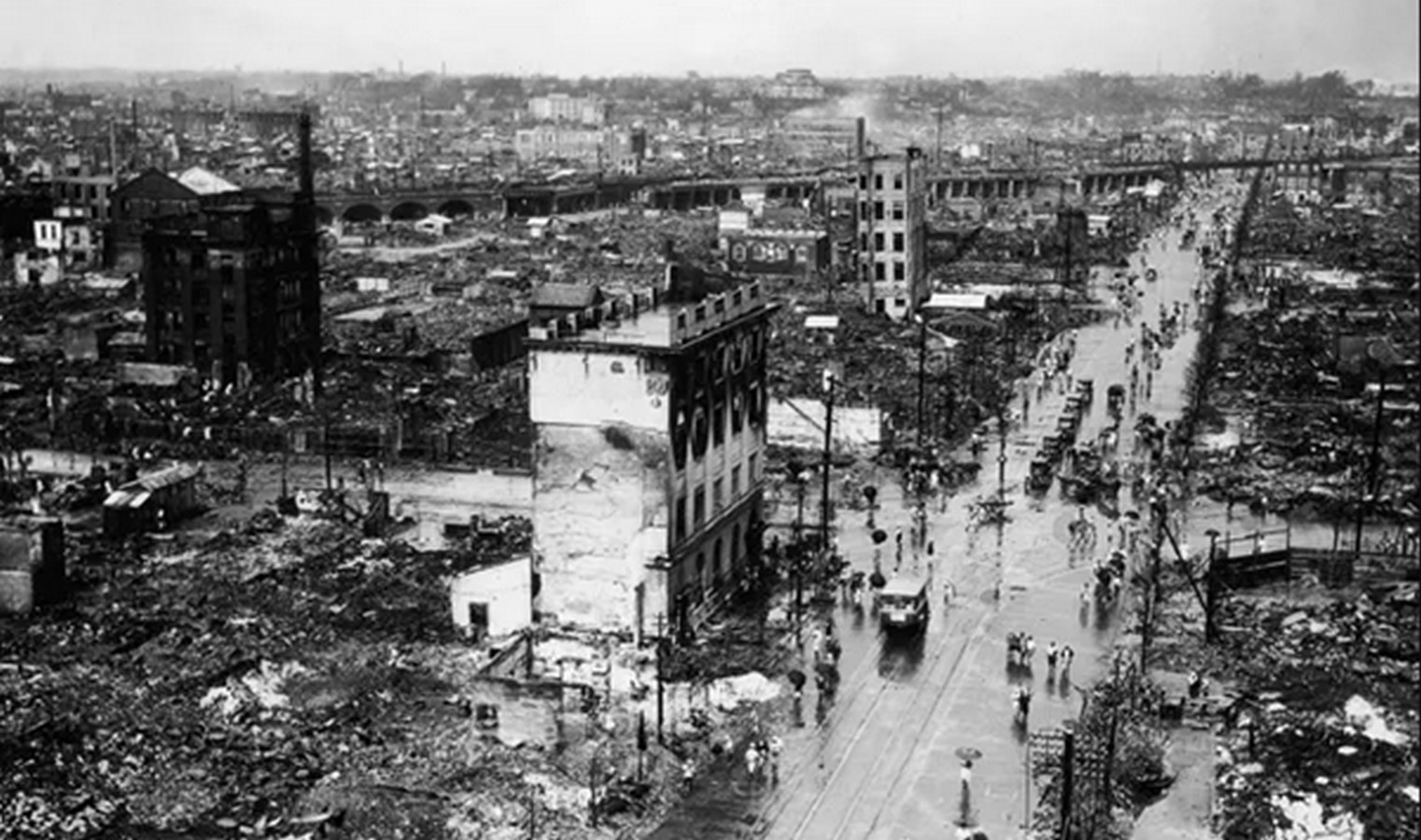
The strongest earthquake in Japan since 1923 hit the industrial city of Kobe in January 1995. With a magnitude of 7.2, more than 6 000 people died, and over 300 000 people lost their homes.
The terrible Tohoku earthquake and tsunami of 2011, on March 11th, was triggered by the most powerful recorded earthquake in history. Aftershocks concentrated in the region where it generated lasted up to a year. The 9.0 magnitude earthquake caused economic losses worth billions of yen.
Japan’s long history of these environmental phenomena has led to the development of effective risk prevention, disaster preparedness culture, and resilience. The necessity of precise earthquake measurement as an initial element in understanding and mitigating seismic risk is crucial.
There is a 6% probability of a repeat of a magnitude 7.9 earthquake in Tokyo within the next 30 years, which will result in incredible economic loss due to Tokyo’s population density and concentration of assets. With climate change increasing the frequency of significant disasters globally, seismic building codes are regularly updated to increase earthquake resistance.
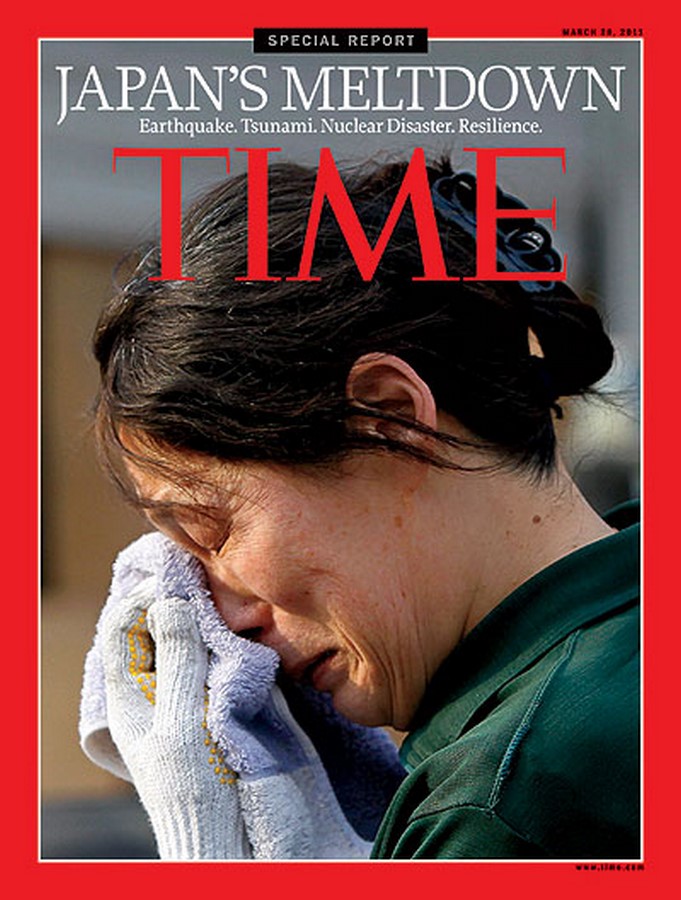
Earthquake Measurement: Foundation of Resilient Design
Importance of Accurate Earthquake Measurement
Due to Japan’s extensive experience with earthquakes, they established the necessity for precise data on earthquake magnitude, depth, and ground shaking intensity to protect lives and property. These precise measurements of earthquakes are essential for assessing their impact, predicting aftershocks, and preparing effective disaster response plans.
Different Scales for Measuring Earthquakes
Various scales are used worldwide to measure and assess the many aspects of an earthquake. With magnitude scales measuring the earthquake’s size and intensity scales describing its effects on people, buildings, and the environment. Depending on the information required for earthquake monitoring, response, and research, there are different scales, such as the Richter Scale, which measures the amplitude of seismic waves; the Moment Magnitude Scale (Mw), which reflects the seismic moment released during an earthquake or even the Shindo Scale. Japan initiated the Shindo Scale to assess the intensity of ground shaking at specific locations.
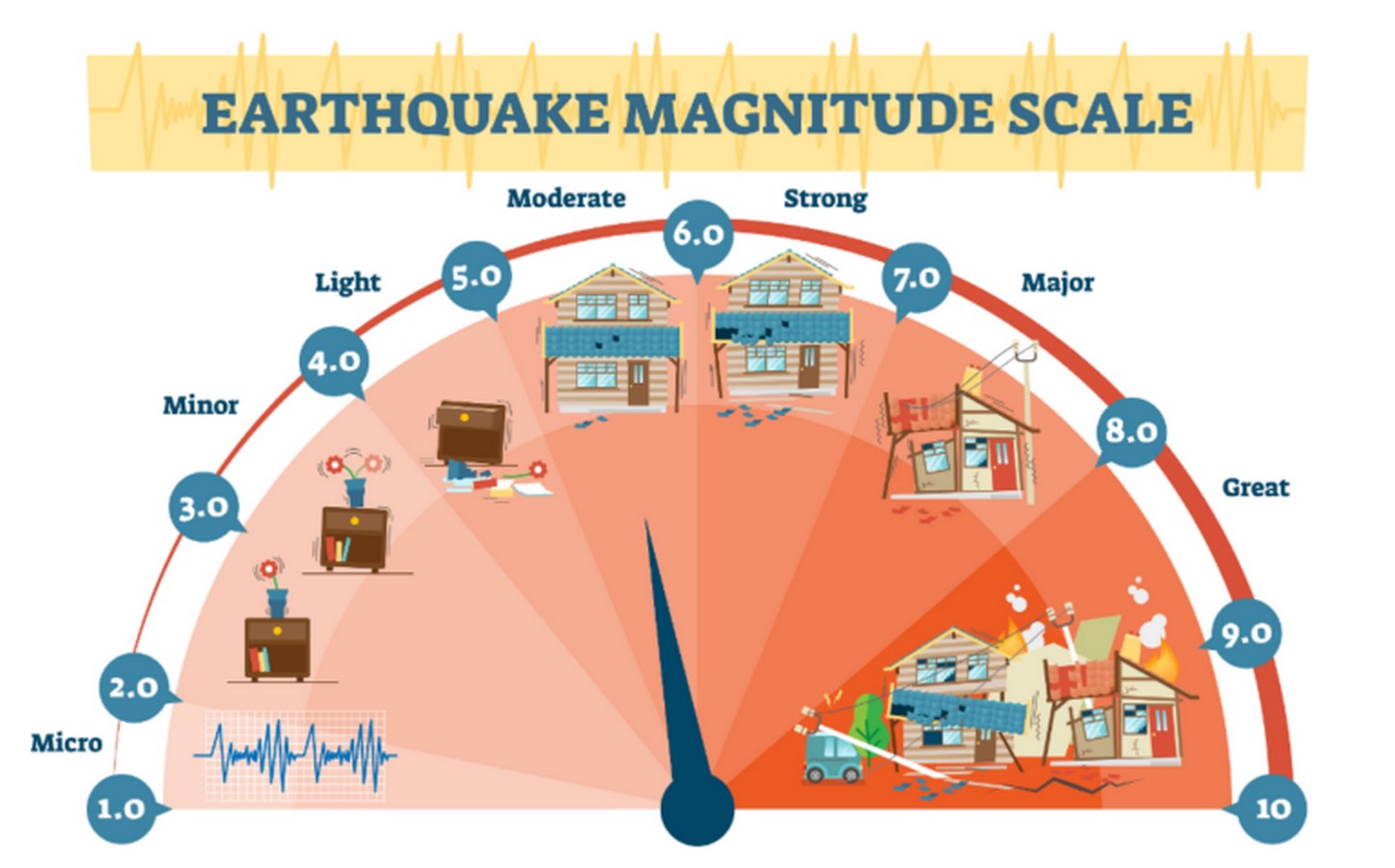
Cultural and Social Impact of Earthquakes in Japan:
As previously discussed, the historical significance of earthquakes in Japan has left a lasting impression on the nation’s shared consciousness. These seismic events have profoundly impacted Japanese society, influencing their risk mitigation and disaster preparedness approach. Due to this, Japan stands out as an example of a disaster-ready nation.
Influence on Building and Infrastructure Practices
Earthquake data informs the building design and infrastructure planning industries, helping to improve earthquake resilience.
Japan’s commitment to accurate earthquake measurement led to the development of the Moment Magnitude Scale (Mw), a more precise magnitude scale that enables engineers to design structures that can survive even the strongest earthquakes. These precise measurements inform Japan’s infrastructure standards and building codes, making structures more resilient and capable of resisting anticipated ground motion.
The Shindo Scale’s localised intensity assessments guide the retrofitting of vulnerable buildings and inform the construction of significant infrastructure, such as bridges and tunnels, in areas with higher seismic risk.
Global Adoption
Japan’s leadership in earthquake measurement and mitigation has influenced international practices. The adoption of Mw as the standard magnitude scale worldwide reflects Japan’s contribution to global earthquake science. Many countries in seismically active regions look to Japan’s expertise in earthquake measurement and its application to building and infrastructure design as a model for enhancing their resilience.
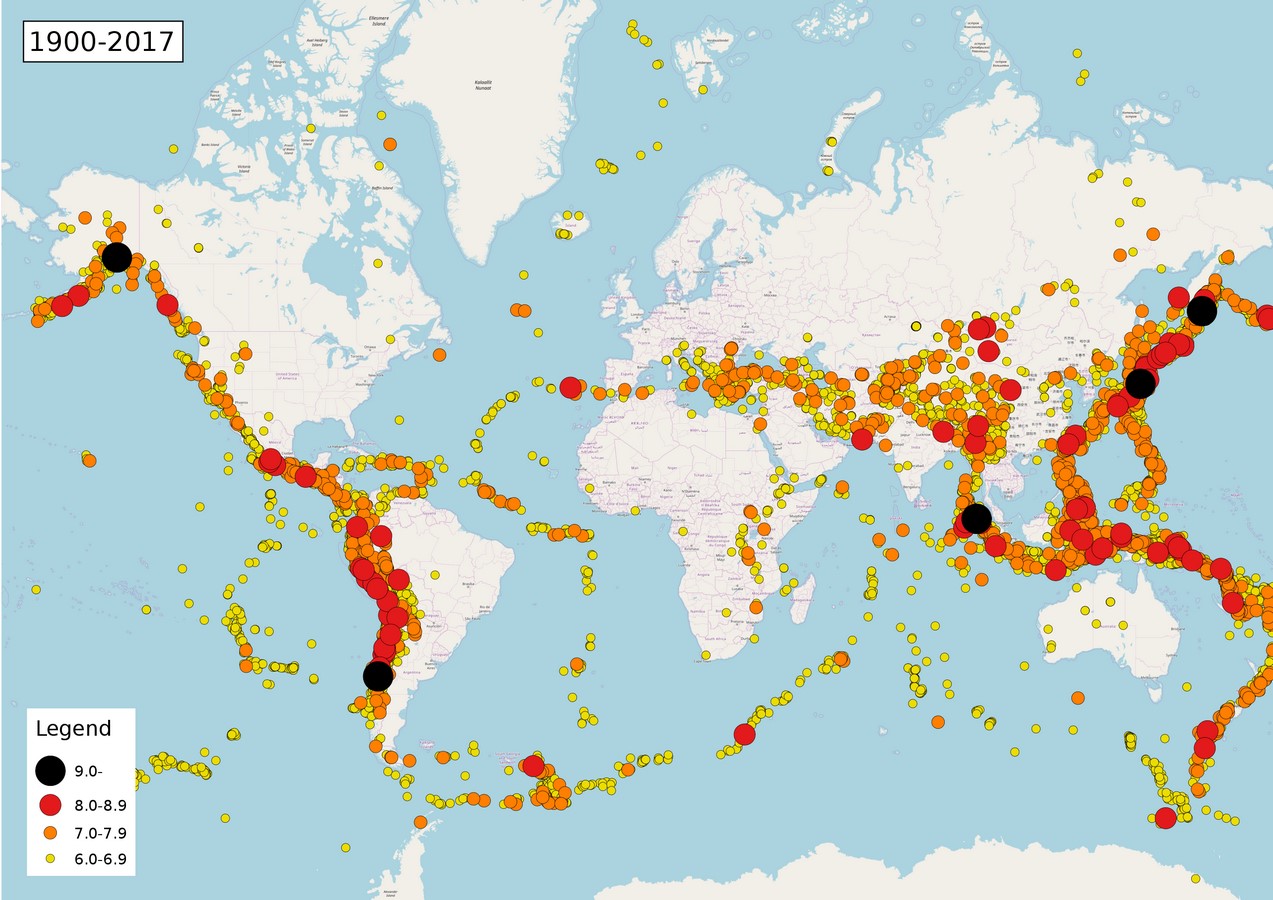
Seismic Resilience in Design and Construction
Due to Japan’s position on the Ring of Fire, a seismic hotspot, their skill in designing earthquake-proof buildings is necessary.
Many innovative design methods for seismic resilience are utilised to enhance earthquake resilience, from seismic isolation, where buildings use shock absorbers or bearings to resist earthquake motions, preventing collapse by absorbing seismic energy, to motion dampers that are placed throughout tall buildings to reduce motion during earthquakes, thus enhancing their resilience.
Researchers are continually enhancing earthquake-resistant designs and testing new technologies and creative solutions. They aim to create buildings capable of withstanding even the largest earthquakes with minimal damage. Due to the unpredictable nature of earthquakes, the steadfast resilience of a design is often only known after a significant event occurs, emphasising the importance of continuous innovation in seismic engineering.
Engineers and architects collaborate to integrate seismic elements elegantly into building design, using structures like mesh to prevent support buckling and regular layouts with even grid spacing and consistent floor heights to improve earthquake performance within buildings.
Seismic engineering has characterised earthquake-resistant buildings into three types, and although not legally required, Japan recommends and encourages utilising these standards to increase building seismic performance.
- Structures with Antiseismic Systems (Taishin). These combine numerous elements to bolster earthquake resistance, such as columns, beams, and walls of a minimum thickness, emphasising enhancing deformation capacity to prevent catastrophic failure and surviving earthquake vibrations.
- Structures with Damping Systems (Seishin). These structures absorb seismic energy through substantial deformation by isolating the building’s frame from its foundation using shock absorbers, rubber layers (dampers), or seismic isolator dampers to achieve efficient energy absorption.
- Seismically Isolated Structures (Menshin). An isolation layer is introduced between the ground and the structure, commonly using lead, steel, and thick rubber layers, reducing ground motion’s impact on the building. It is considered the safest but also very expensive.

Japan’s thorough building standards, evolving regulations, and diverse earthquake-resistant structures reflect its steady commitment to seismic resilience. Understanding these aspects is crucial for properties in Japan to maintain earthquake resistance.
Building Codes and Regulations for Safer Construction
Japan’s skyscrapers are designed to withstand the ground’s dance during earthquakes, demonstrating the connection between resilience and architectural innovation. Japan’s journey in implementing and evolving building codes and regulations for earthquake-resistant construction is an important example of how safety measures can be developed and improved over time.
With urbanisation on the rise worldwide, effective building codes and regulations are crucial. Japan’s continuous revisions and updates to its building standards serve as a model for ensuring safety and resilience in construction. Construction practices worldwide can benefit from their well-established measures.
After WWII, to ensure earthquake-resistant building construction, the Japanese government introduced a series of rigorous measures driven by challenges like limited technical and institutional capacity, previous poor construction quality, high demand for affordable housing, fire risks, public health concerns and frequent earthquakes.
The Building Standard Act in Japan has undergone multiple revisions over the past century. The New Antiseismic Design Code was introduced in 1981, emphasising earthquake resistance and occupant safety. Buildings must withstand seismic intensity scale 5+ earthquakes without collapsing under the new standards.
The 1995 Great Hanshin-Awaji Earthquake demonstrated the effectiveness of these new regulations, with only 3% of buildings constructed to 1981 standards collapsing. Older buildings constructed before 1982 often require retrofitting for earthquake resistance to comply.
In response to the 1995 earthquake, the Building Standard Act was revised again in 2000, improving the safety of wooden buildings and making ground investigations nearly mandatory.
The Housing Quality Assurance Act of 2000 introduced a seismic grade system, evaluating quake-resistance performance on three levels where higher-grade buildings offer better quake resistance.
Seismic Grade 1 focuses merely on “damage prevention”. The aim is to minimise structural damage during earthquakes to ensure habitability and functionality – generally, only in residential and commercial buildings where significant structural damage prevention is prioritised.
Seismic Grade 2 goes beyond “damage prevention”, emphasising the “prevention of collapse”. Buildings designed to this grade are expected to prevent damage and remain standing and safe during earthquakes. This grade generally applies to more public spaces like schools and hospitals.
Seismic Grade 3 is the highest level of quake resistance. It is suitable for critical facilities such as fire and police stations, where it is vital to remain fully operational even during significant seismic events. Buildings in this category are engineered to withstand even the largest earthquakes with minimal damage, ensuring their functionality and safety.
Japan, exposed to frequent seismic activity, prioritises earthquake-resistant construction. Utilising these seismic grades helps to ensure that structures in Japan are designed to meet the specific seismic challenges of the region. By 2013, 82% of residential buildings in Japan were earthquake-resilient.
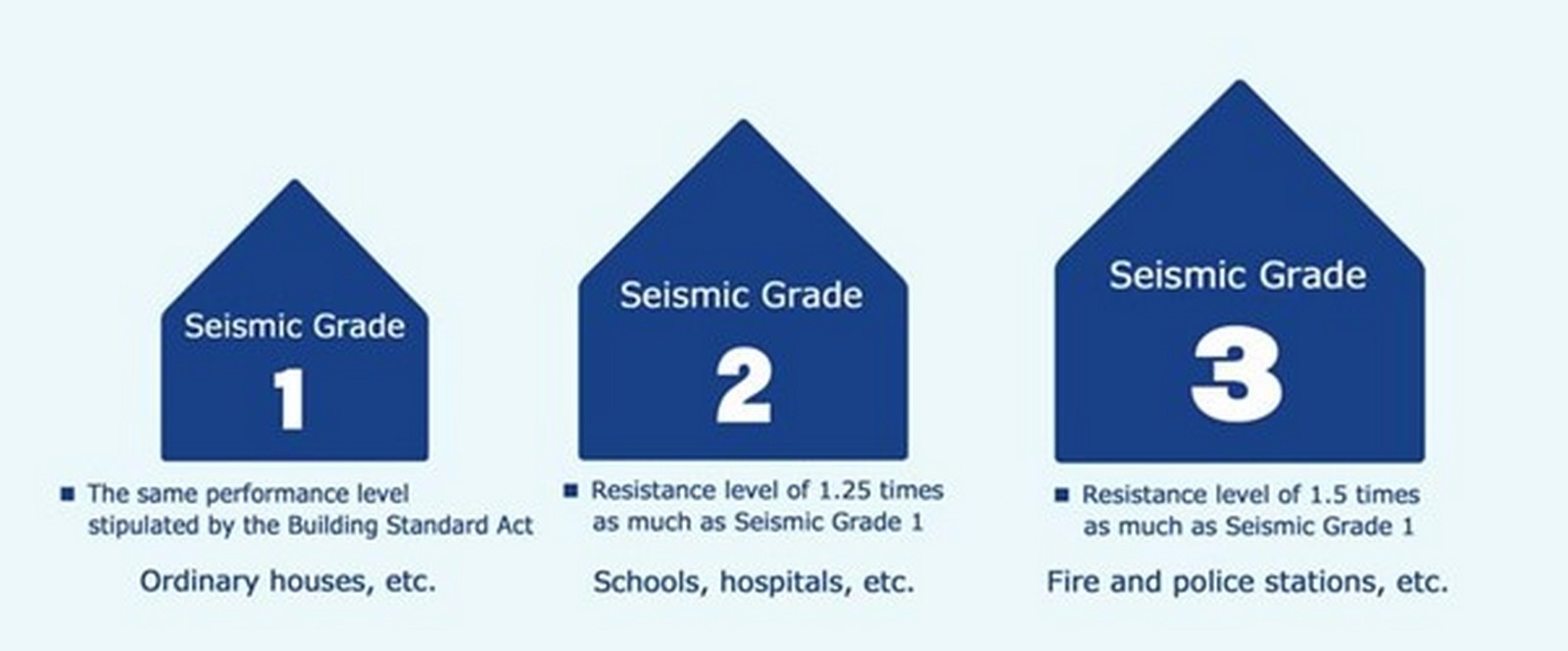
Innovations in Earthquake Resistance Technologies and Earthquake-Proof Features of Buildings in Japan
Earthquake-resistant construction is necessary to help buildings and structures withstand the intense ground shaking associated with earthquakes. Japanese building designs commonly employ many innovative and effective earthquake-proof building features.
Specific construction methods must be utilised correctly to achieve effective earthquake resistance, ensuring that the design objectives for earthquake resilience are met, minimising structural damage and reducing the risk of injuries and deaths.
Considering the location and purpose of the building are important when determining the practicality and feasibility of earthquake-resistant designs for a specific region, especially in Japan.
However, earthquake-resistant construction is a multifaceted process that goes beyond design considerations. Precise construction methods, suitable materials, reinforcement of construction joints, and proper grounding and foundation construction jointly contribute to the resilience of buildings and structures in earthquake-prone regions.
Design and Construction Challenges
Earthquake-resistant designs rely heavily on precise construction methods. Ensuring the designs are executed appropriately and effectively ensures the safety and resilience of structures in earthquake-prone areas. Challenges are often found on construction sites, which lead to building failures during earthquakes. Common issues that arise are due to the use of construction methods and materials that are below standard quality. Inadequate concrete mixing and curing, lack of quality control, and shortages of suitable materials needed for reinforcement, like steel, can weaken structures.
Reinforced Concrete and Steel-Frame Buildings
Modern buildings in Japan mainly use reinforced concrete or steel frames as they can be designed for seismic resistance. Steel reinforcement is commonly used to achieve flexibility and elasticity, two essential concepts for seismic resilience.
Traditional wooden buildings have limitations in significant earthquakes, needing reinforcement such as increased wall quantity, braces, and joint reinforcement. Older buildings also may require seismic assessments or reinforcement to increase their seismic performance.
In addition to modern construction methods, Japan’s architectural heritage has contributed to seismic resilience design. Traditional Japanese architecture is known for its flexibility and resilience. Flexible wooden joinery and design principles allow structures to sway and absorb seismic energy.
Using prefabricated modules and lightweight steel components in modular and light steel structures allows earthquake resistance while offering advantages like ease of assembly, recyclability, and transportability.
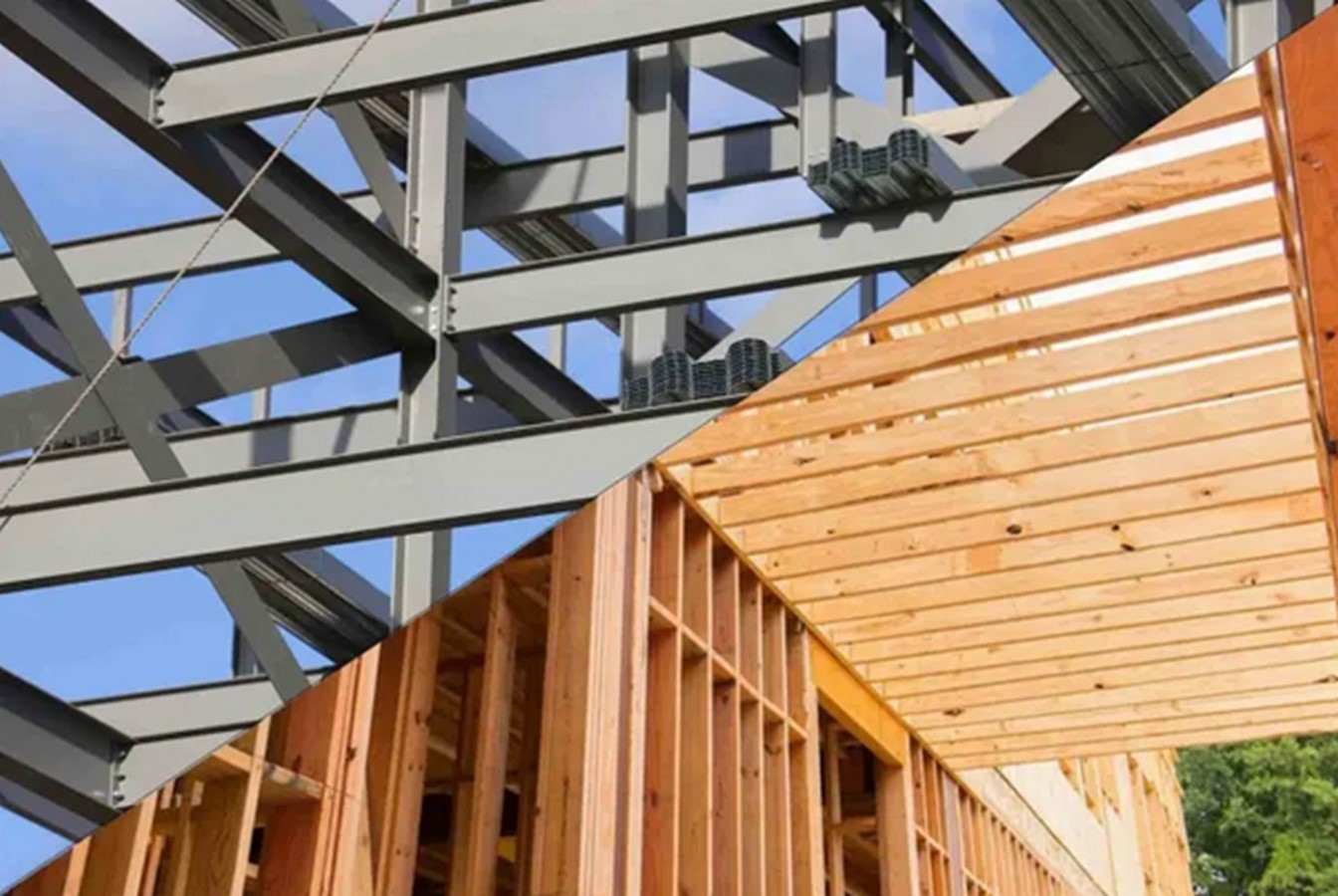
Foundation and Grounding
Proper grounding and foundation on firm soil are essential for seismic resilience and stability, as building on loose soils can lead to excessive movement during earthquakes. Deeper, reinforced foundations are recommended over shallow foundations that can deteriorate over time, reducing seismic resilience. Seishin and Menshin structures can be utilised to reduce the motion impact of an earthquake on a building.
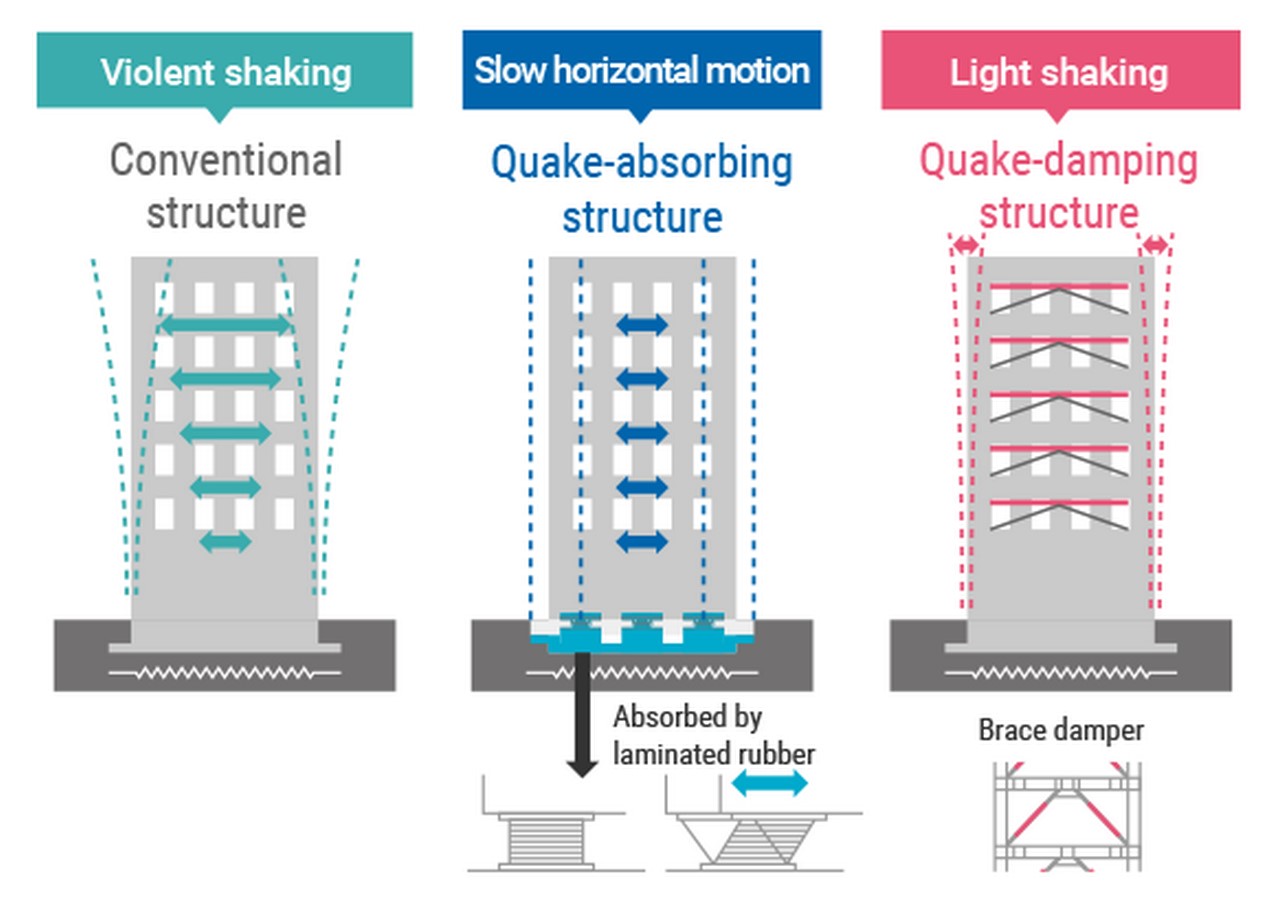
Shear Loading and Construction Joints
In concrete and masonry structures, lateral and shear loading during earthquakes concentrates stress at the corners and joints. Precise and meticulous attention is necessary to prepare and reinforce joints and corners to prevent failure.
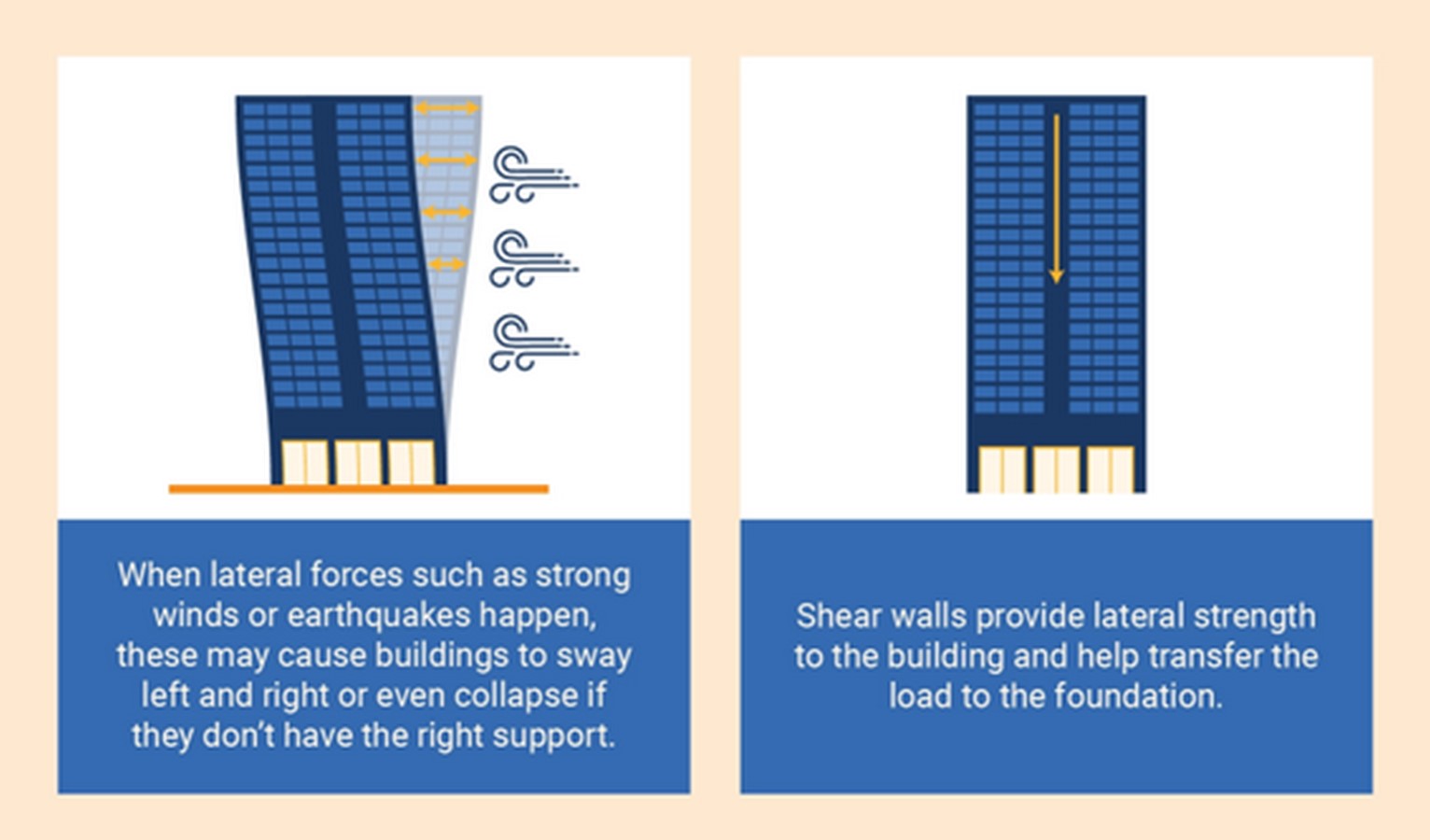
Load-bearing and Structural Elements
Structural elements such as diagonal dampers or cross-bracing, steel beams, and columns are used in building construction to enhance a structure’s ability to withstand lateral forces, improving the overall seismic resilience of buildings.
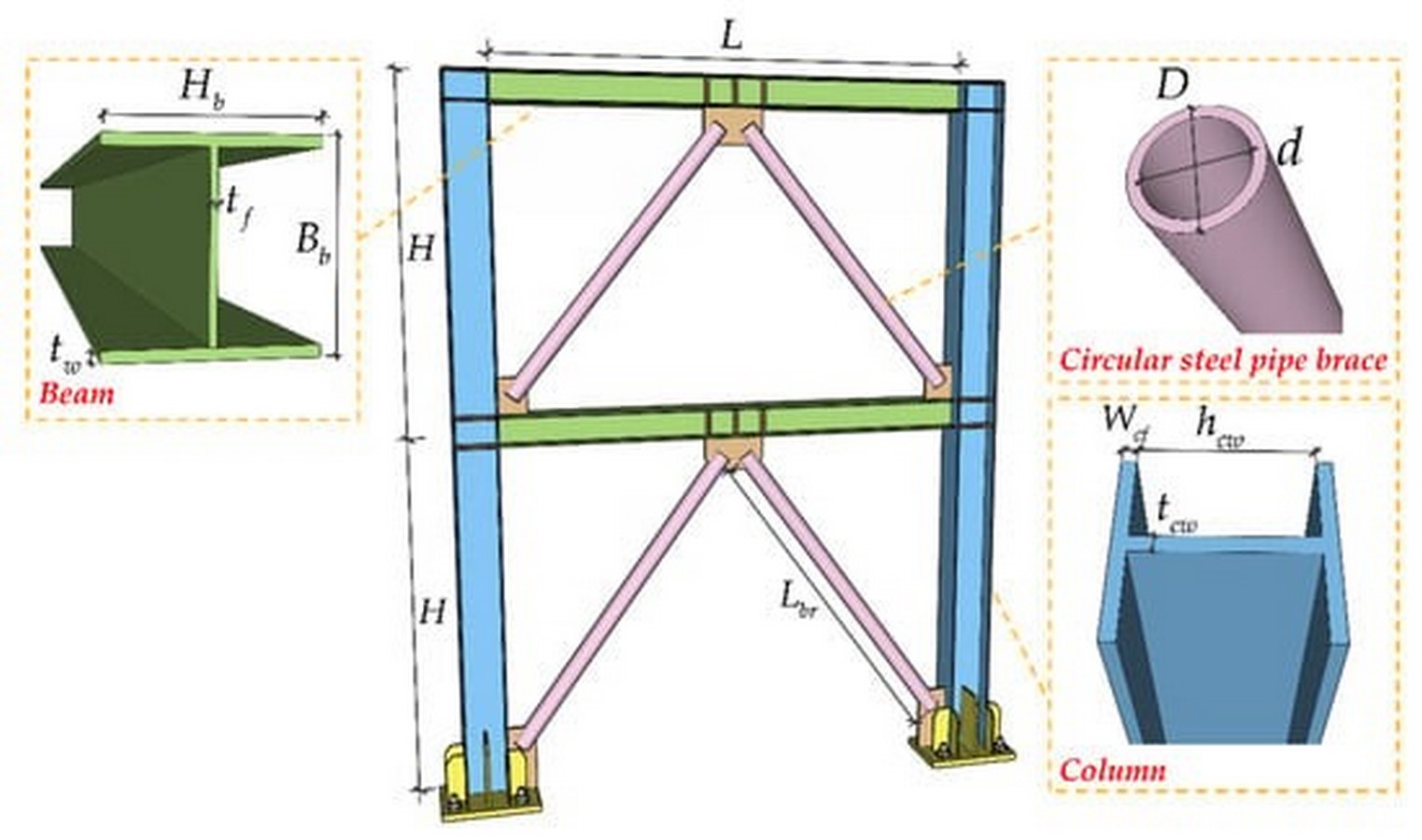
Top-to-Toe Resilience with Dampers Installed Block by Block
The Top-to-toe resilience method incorporates the entire building from its upper levels (top) to its lower levels (toe or foundation). The concept specifically refers to strategically installing dampers throughout the entire height or structure to ensure that every building section is equipped to absorb and dissipate seismic energy effectively.
Various dampers, including diagonal dampers, absorb and dissipate energy during seismic events.
Dampers (inter-story bracing)
Dampers between levels are structural elements that absorb and dissipate energy during seismic events or other lateral forces. Unlike diagonal dampers, these inter-story dampers act as energy-absorbing devices, reducing the impact of forces on the building’s structure. By deforming and absorbing energy by converting it into other forms, such as heat or friction, the overall stress on the building’s structure is minimised, and excessive movement and damage is prevented.
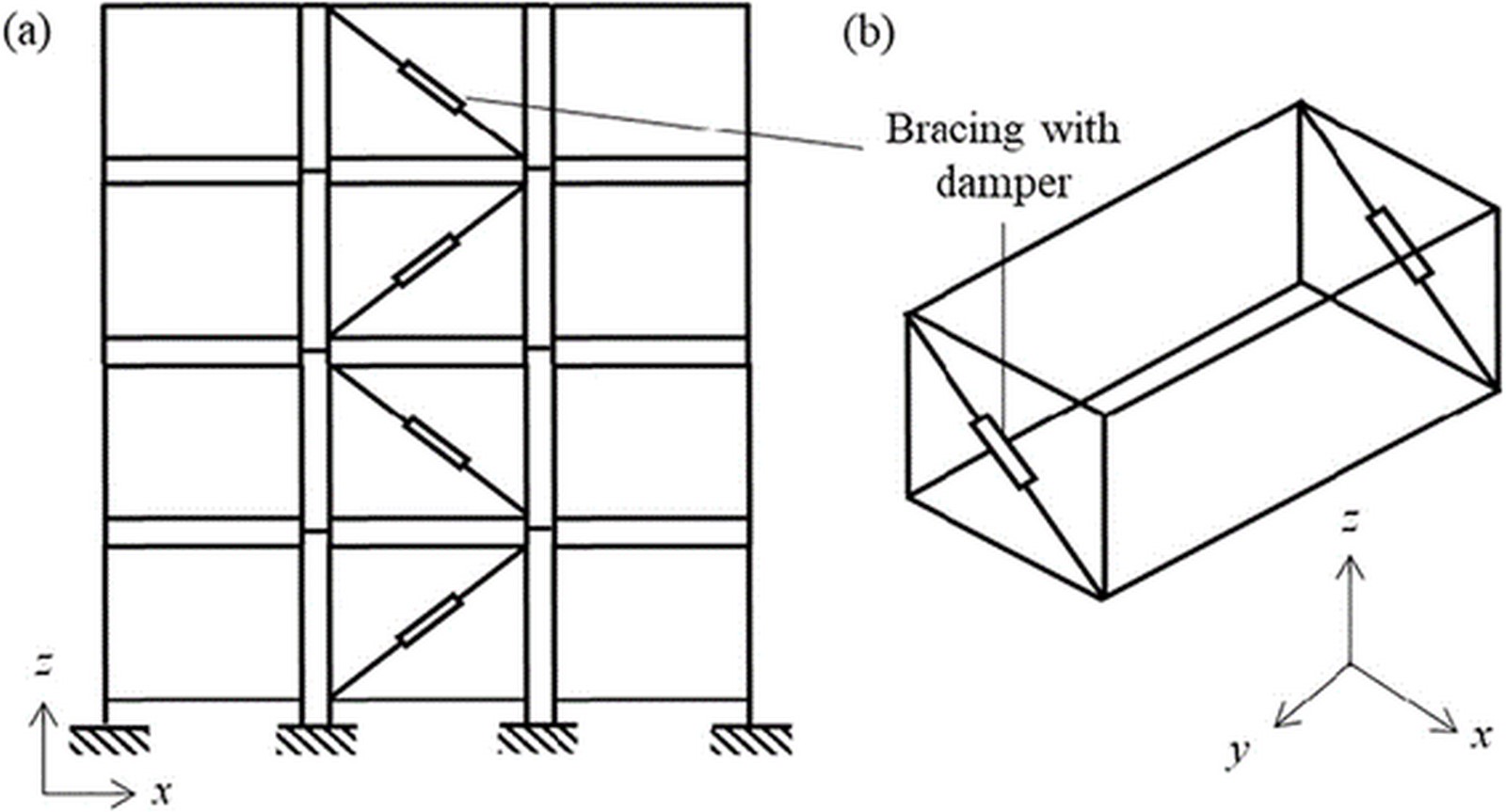
Pendulums
Pendulums are a structural mechanism that enhances buildings’ and structures’ stability and seismic resilience. Often designed to be a few meters tall, depending on the building’s height, design, and engineering specifications, a mass is suspended from a fixed point within a building to absorb and dissipate energy, enhancing the building’s stability during seismic events.

Mesh Structures
Mesh structures involve the use of interconnected metal grids or networks within the construction of a building or structure. They reinforce concrete and other materials to improve the structure’s strength and resilience. Mesh structures help distribute forces and prevent cracks or failure.

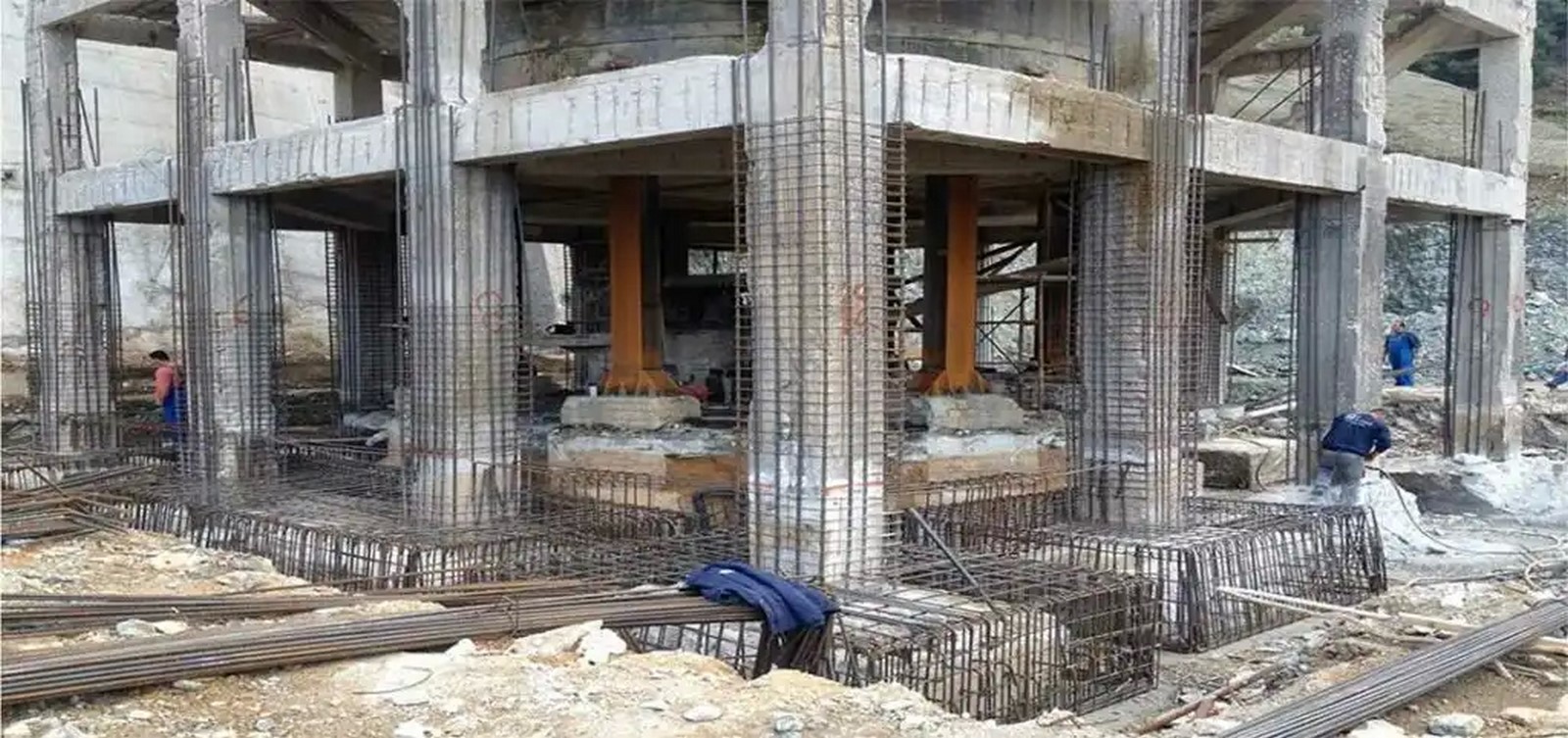
Fall-away Doors
Fall-away doors are designed to open inward or outward (whichever is applicable) easily and quickly in an emergency, providing additional escape routes for building occupants – a safety feature in buildings to ensure rapid evacuation during emergencies.
Covered Lights
Covered lights, also known as “safety lights” or “shatterproof lights,” are light fixtures with protective covers or shields. They prevent glass or bulbs from shattering during seismic events, ensuring people are not harmed by falling glass or exposed electrical elements.
“Seismic Invisibility Cloak” with Plastic Rings
A structural technique uses plastic rings placed on a building’s foundation to act as curtains to make earthquake waves “invisible,” reducing movement and seismic forces transmitted to the building – a creative approach to minimising structural damage during earthquakes. The rings are buried underneath the ground and foundation to deflect and reroute the earthquake’s energy from the building.
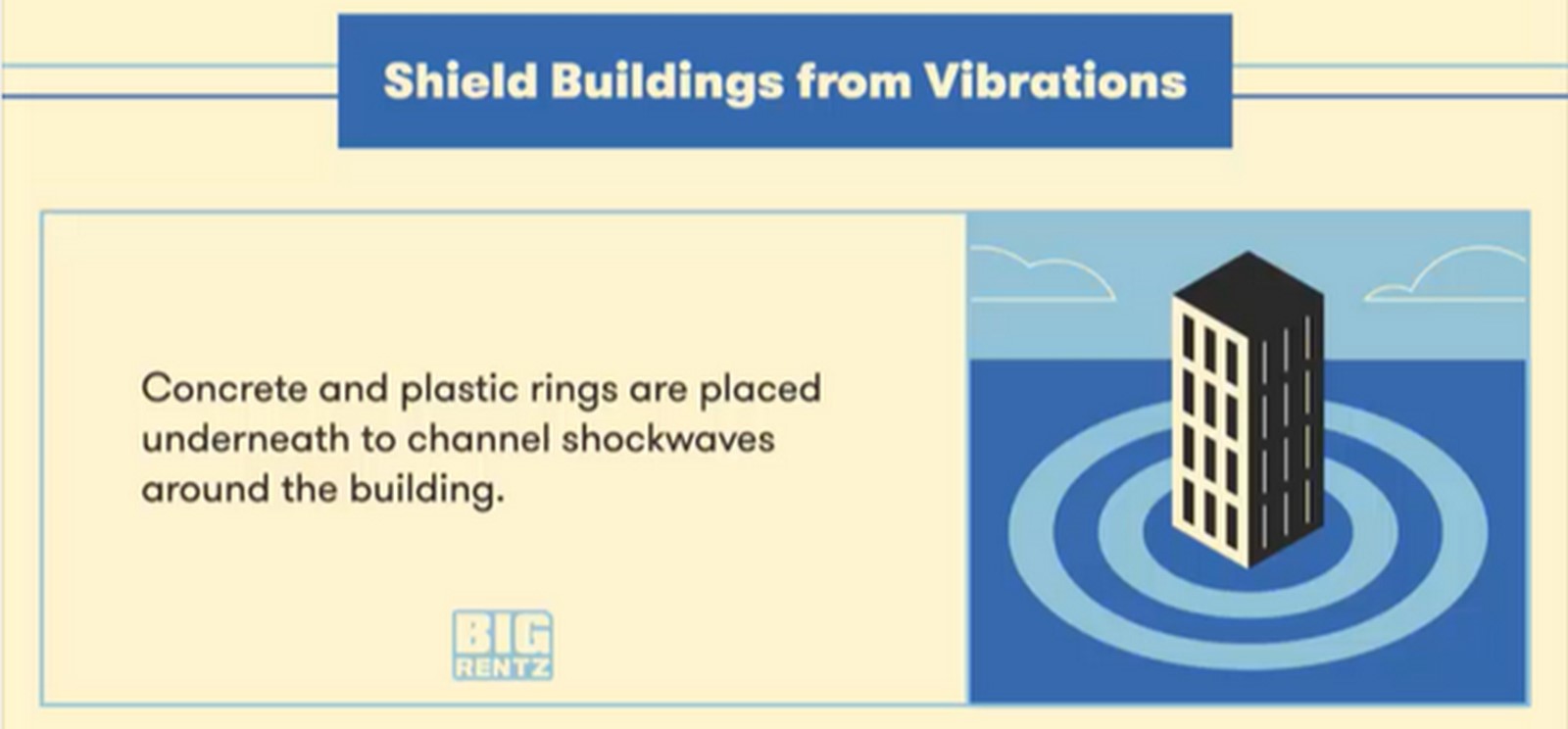
Experimentation with Unconventional Materials
In pursuing earthquake resistance, architects and engineers sometimes experiment with unconventional materials such as bamboo, wood and steel latticework. These innovative creations enhance a building’s seismic performance, aiming to combine sustainability with structural resilience.
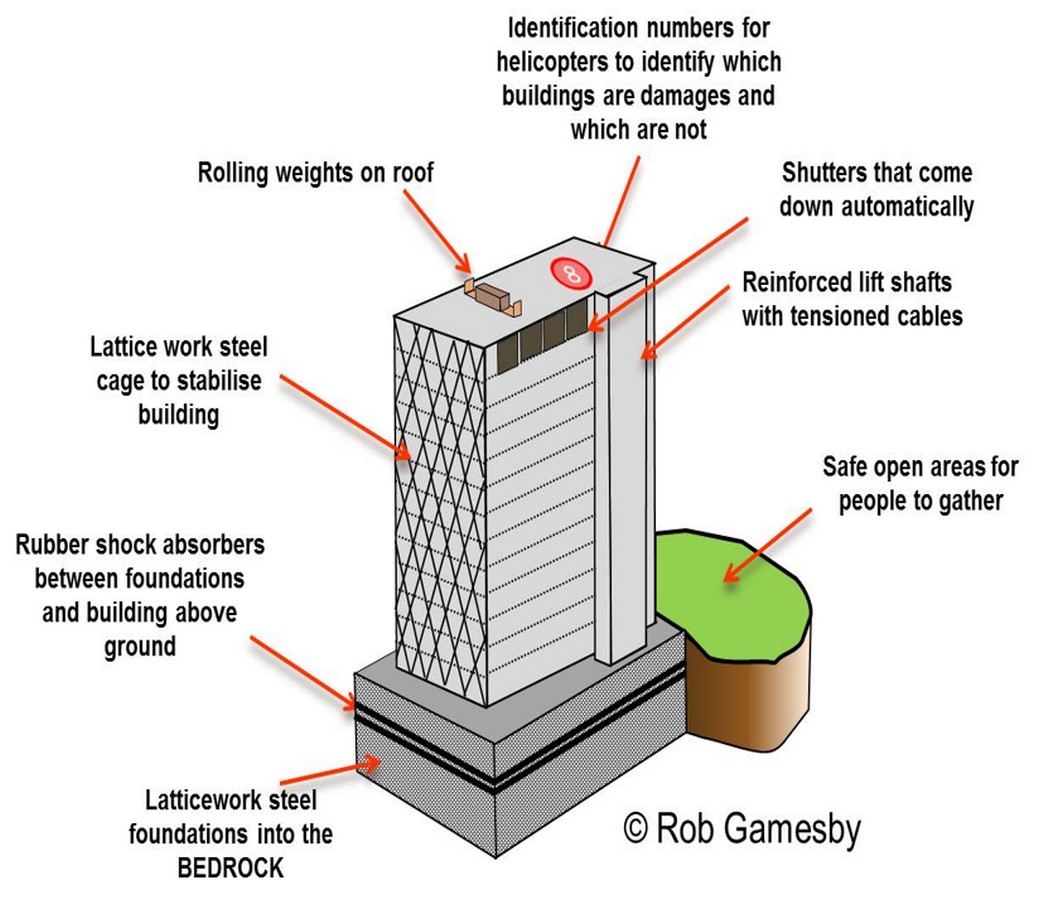
Architect Shigeru Ban’s Innovative Emergency Housing Designs
Architect Shigeru Ban is recognised for his innovative designs, especially emergency housing designs that provide privacy and shelter in disaster-stricken areas. He showcases his commitment to innovative and resilient architecture by using lightweight and modular materials such as rolled cardboard and shipping containers to create sustainable housing solutions.
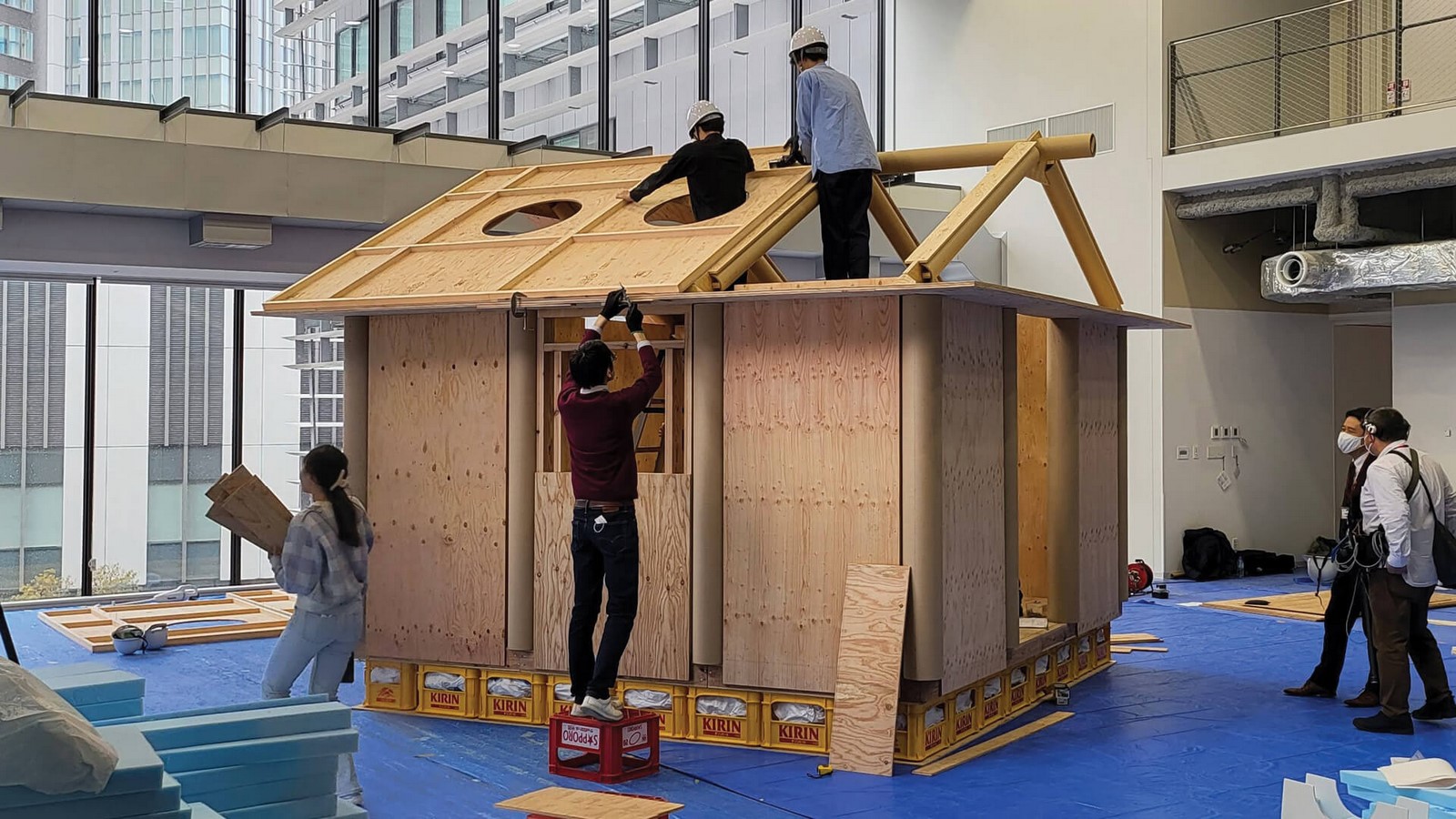
Mitigation Strategies and Future Directions
Ramping Up Disaster Mitigation:
Japan is intensifying its investment in mitigating natural disasters. A new five-year plan focuses on preparedness for massive earthquakes, wind, and flood damage. This includes upgrading roads, schools, and airports and employing advanced technologies like supercomputers for prediction. As learned following the Great Hanshin-Awaji Earthquake in 1995, road repairs are being prioritised to ensure the supply of daily necessities and to prevent delays in industrial and housing reconstruction.
Architects and engineers in Japan are pioneering technologies and designs to reduce damage. Features like kenchikushi (licensed architect-engineers liable for building defects for a decade) and legislative frameworks have created a highly resilient built environment.
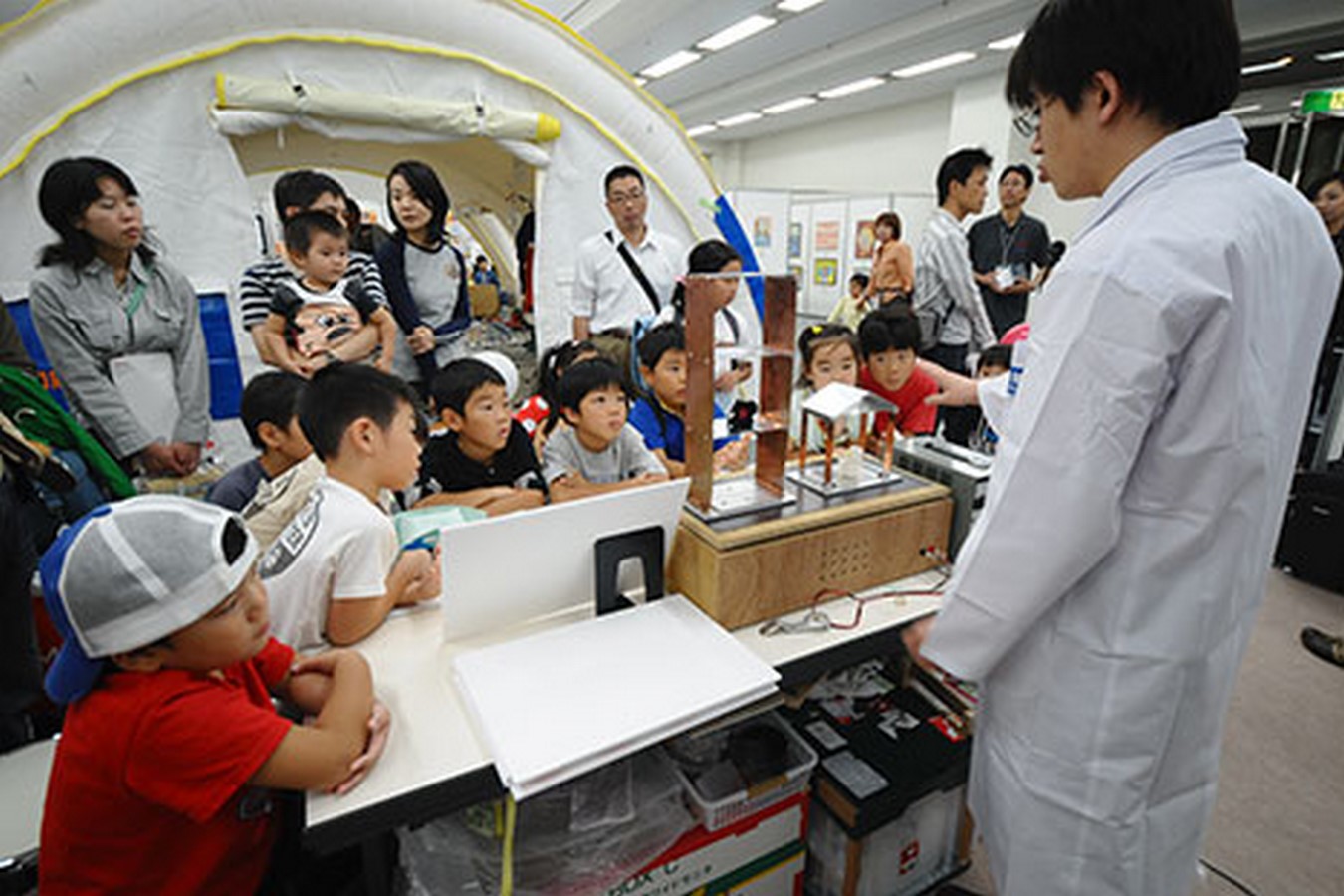
Artificial Intelligence:
Artificial intelligence is becoming integral to safer building design. Earthquake and tsunami simulation software can predict loads and speeds within days, replacing lengthy data collection and tests.
AI-generated statistics and simulations can inform design elements, such as the shape of the building and the thickness of the glass used in windows.

Micro-Level Disaster Preparedness:
Japanese cities invest in awareness systems, public education, and training for disaster preparedness. Designers in Japan are creating more accessible and stylish products for disaster preparedness, such as solar-charging LED lamps, smokeless candles, stackable hard hats, and portable toilet kits.
Instant noodles, invented in Japan, have become a staple for disaster relief efforts worldwide due to their convenience, preservability, and affordability. The World Instant Noodle Association helps distribute instant noodles in disaster-affected areas.
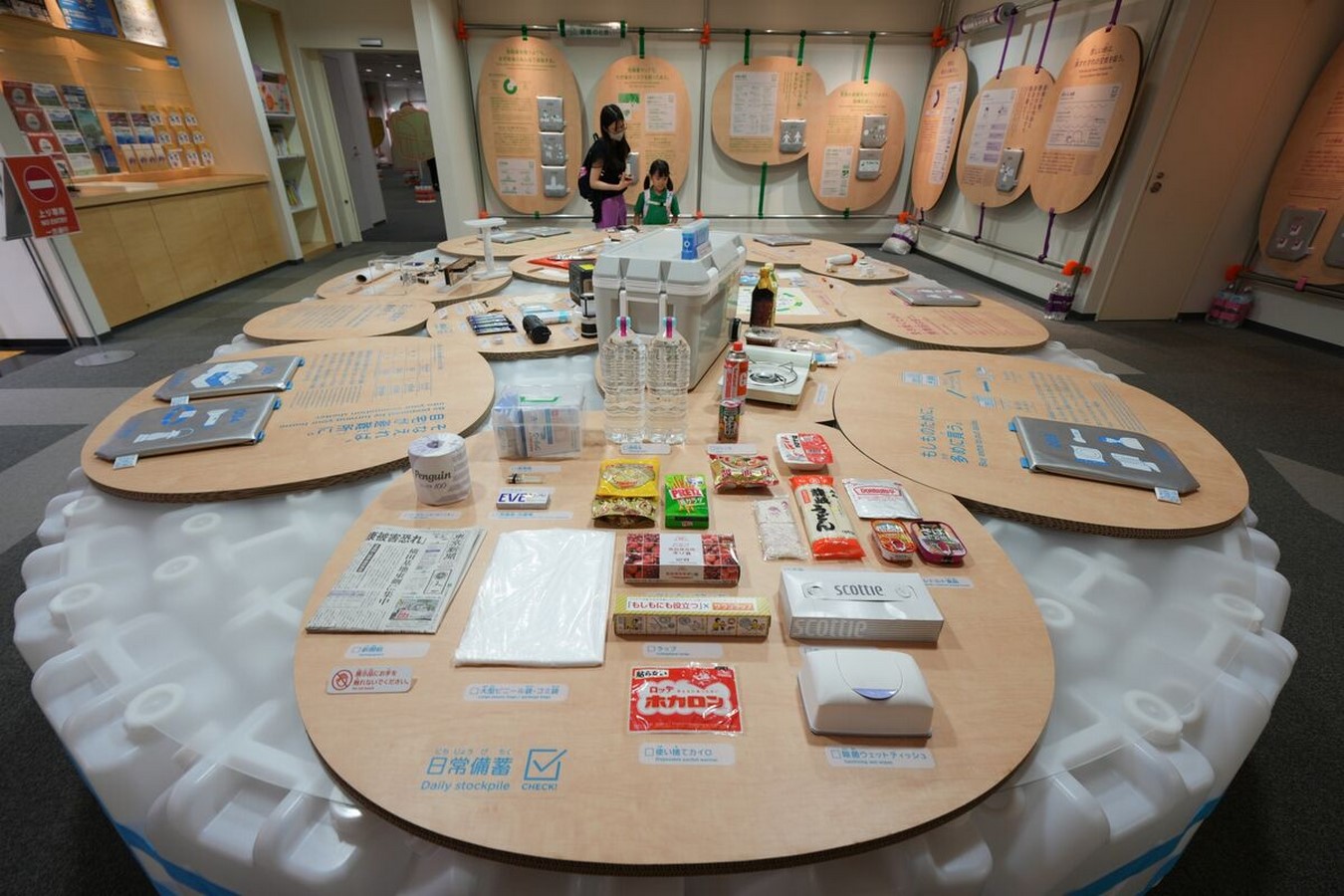
Earthquake Prediction
Japan has made substantial investments in earthquake prediction, primarily focusing on long-term probability forecasting. Continuous GPS observation facilities have improved data collection. However, achieving short-term prediction remains challenging, with few successful examples.
Key Insights for Global Earthquake Resilience
Japan’s versatile approach to earthquake resilience offers valuable lessons for regions facing similar challenges. Whether through ongoing preparedness, innovative technologies, government involvement, or international collaboration, Japan’s experience is a beneficial source of knowledge for building a more earthquake-resilient future.
Ongoing Preparedness:
Japan’s dedication to earthquake preparedness extends beyond its stringent building codes. It includes a comprehensive approach to training and education. Regular drills and simulations are conducted in schools, workplaces, and communities, ensuring residents are well-prepared to respond effectively during earthquakes. A network of seismometers is used for early warning systems, providing critical advance notice so that critical infrastructure can be shut down and people can take cover.
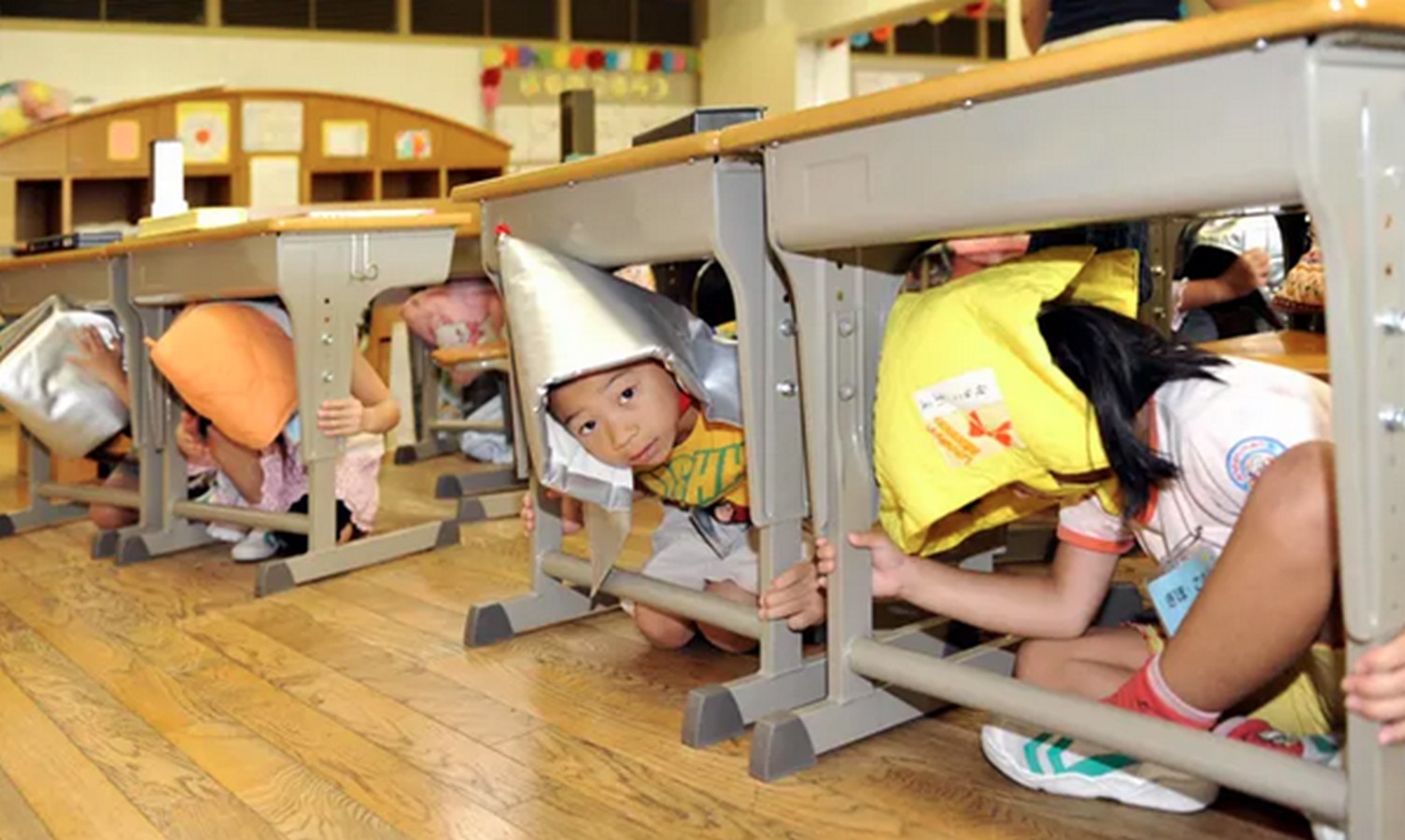
Incorporating Innovation:
Japan’s pioneering earthquake-resistant building technologies have set global standards. Having gone beyond conventional approaches like base isolation and damping systems, Japan explores cutting-edge solutions such as shape memory alloys and smart materials. Innovation in earthquake resilience is advancing thanks to continuous research and development efforts to encourage a culture of improvement in structural engineering.
Public Awareness:
Japan’s comprehensive culture of preparedness, ingrained in schools and workplaces, serves as a model for educating the entire population on the importance of preparedness and response. Promoting awareness about earthquake risks and preparedness measures can reduce the impact of earthquakes.
Government Involvement:
Japan’s government plays a pivotal role in disaster management and resilience by investing significantly in making infrastructure more earthquake-resistant.
The Disaster Management Agency coordinates disaster response efforts at a national level. Property owners and businesses are given financial incentives to retrofit older buildings to contribute to the resilience of the built environment.
Adaptation to Urban Growth:
Accommodating population growth while maintaining earthquake resilience presents a unique challenge that Japan has successfully navigated. Adapting building codes and infrastructure is essential in regions experiencing rapid urbanisation, such as Tokyo.
International Cooperation:
Japan actively engages in international cooperation efforts related to earthquake resilience, sharing its substantial knowledge and expertise with other earthquake-prone countries and fostering collaboration in areas like earthquake research, technology exchange, and disaster response coordination. Global cooperation is essential for addressing shared challenges and reducing the impact of earthquakes worldwide.
Education and Financial Incentives:
Establishing an environment that complies with building standards involves education, advice, and financial incentives while raising awareness among residents about the benefits of resilient construction practices.
Collaboration with the Private Sector:
Engagement between businesses and construction companies in the resilience effort is essential. Collaborating with the private sector can boost local enforcement capacity and ensure that building regulations are followed effectively.
Recognition of Local Construction Practices:
Customised solutions that align with local realities can be developed to improve resilience. Recognising and addressing prevalent construction practices, including nonengineered methods, is critical.
Conclusion
Japan’s history of earthquakes has significantly influenced its approach to building design and infrastructure construction. They have developed cutting-edge seismic engineering techniques, incorporating innovations like base isolators and damping systems into building designs to enhance earthquake resistance.
Rigorous building codes and standards are thoroughly enforced, ensuring structures are built to endure seismic forces, which is pivotal in reducing earthquake casualties.
Japan’s dedication to research and development has resulted in the creation of early warning systems. Such innovations, along with emergency preparedness and public education campaigns, are fundamental to Japan’s approach to earthquake mitigation, informing people well to prepare and respond quickly in a seismic event.
Despite Japan’s advances, challenges persist, including ongoing efforts in flood risk management and evacuation difficulties for the elderly and COVID-19-related concerns.
Japan’s all-inclusive strategy for earthquake resilience and adaptability in addressing evolving challenges is a valuable model for other earthquake-prone regions worldwide, offering engineering, regulations, and disaster preparedness lessons.
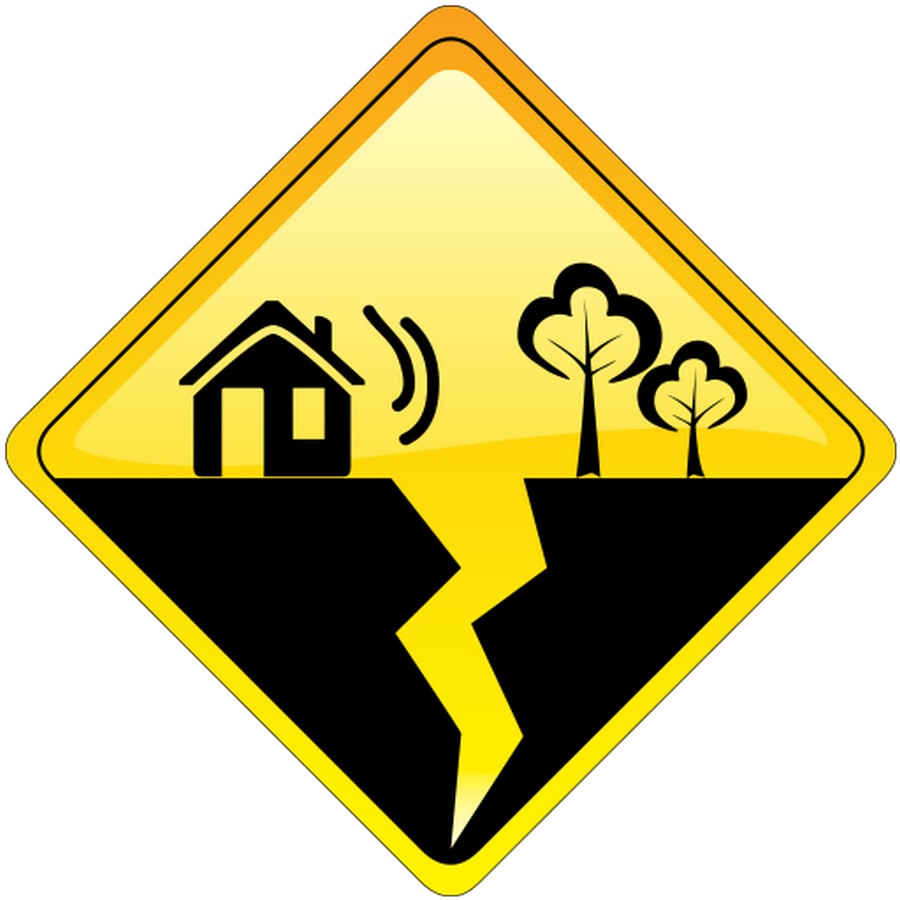
Bibliography
Reference List
Bevere, Lucia , et al. “The 100-Year Legacy of Japan’s Great Kanto Earthquake.” Https://Www.swissre.com/Institute/Research/Sigma-Research/Economic-Insights/100-Year-Legacy-Japan-Great-Kanto-Earthquake.html, Swiss Re Institute, 31 Aug. 2023, www.swissre.com/institute/research/sigma-research/Economic-Insights/100-year-legacy-japan-great-kanto-earthquake.html. Accessed 27 Sept. 2023.
Bradshaw, Alexandra. “Japan and Earthquake.” 29 Mar. 2012.
Bressan, David. “A Short History of Earthquakes in Japan.” Scientific American Blog Network, 11 Mar. 2012, blogs.scientificamerican.com/history-of-geology/a-short-history-of-earthquakes-in-japan/. Accessed 25 Sept. 2023.
Cofer, Ashton . “Earthquake-Resistant Construction | Building Techniques & Materials | Britannica.” Encyclopedia Britannica, 10 Feb. 2023, www.britannica.com/technology/earthquake-resistant-construction. Accessed 23 Sept. 2023.
Geology In. “Using the Richter Scale to Measure Earthquakes.” Geology In, Geology In, 30 Jan. 2015, www.geologyin.com/2015/01/using-richter-scale-to-measure.html. Accessed 28 Sept. 2023.
Golenda, Gabrielle . “Strapping Structures: 7 Earthquake-Resistant Buildings in Japan.” Architizer Journal, 26 Jan. 2016, architizer.com/blog/inspiration/collections/earthquake-resistance-in-japan/. Accessed 22 Sept. 2023.
Henriques, Martha. “How Japan’s Skyscrapers Are Built to Survive Earthquakes.” Bbc.com, BBC, 16 Jan. 2019, www.bbc.com/future/article/20190114-how-japans-skyscrapers-are-built-to-survive-earthquakes. Accessed 23 Sept. 2023.
Ikeuchi, Koji, and Nobuharu Isago. Earthquake Disaster Mitigation Policy in Japan. 2007.
Imahashi, Rurika . “How Japan’s Builders Absorbed the Lessons of the 2011 Earthquake.” Nikkei Asia, 5 Mar. 2021, asia.nikkei.com/Business/Business-Spotlight/How-Japan-s-builders-absorbed-the-lessons-of-the-2011-earthquake. Accessed 23 Sept. 2023.
Islam, Rabiul. “Are Japan-Style Earthquake-Proof Buildings the Future of Real Estate?” Trtworld.com, TRT World, 17 Feb. 2023, www.trtworld.com/magazine/are-japan-style-earthquake-proof-buildings-the-future-of-real-estate-12797059. Accessed 23 Sept. 2023.
Israel, Brett. “Japan’s Explosive Geology Explained.” Livescience.com, Live Science, 15 Sept. 2022, www.livescience.com/30226-japan-tectonics-explosive-geology-ring-of-fire-110314.html. Accessed 24 Sept. 2023.
Japan Guide. “Earthquakes.” Japan-Guide.com, 21 May 2023, www.japan-guide.com/e/e2116.html. Accessed 24 Sept. 2023.
Japan House. “Meeting Disaster with Design in Japan.” Japan House (Los Angeles), 2 Mar. 2023, www.japanhousela.com/articles/meeting-disaster-with-design-in-japan/. Accessed 23 Sept. 2023.
Japan Institute of Architects and Japan Aseismic Safety Organization. Earthquake-Resistant Building Design for Architects: Revised Edition. 1997. Revised ed., Japan, Shokokusha Printing Co., 10 Sept. 2012, pp. 52–167, www.jaso.jp/pdf/earthquake_resistant.pdf.
Katanuma, Marika . “Japan Earthquakes, Typhoons: Disaster-Proofing Lessons for the World.” Bloomberg.com, Bloomberg, 13 Jan. 2021, www.bloomberg.com/news/features/2021-01-13/japan-earthquakes-typhoons-disaster-proofing-lessons-for-the-world. Accessed 23 Sept. 2023.
Koshihara, Mikio. “Creating Earthquake-Resistant Buildings.” U-Tokyo.ac.jp, Tansei Todai Research, 2023, www.u-tokyo.ac.jp/en/about/publications/tansei/10/75-recovery-buildings.html. Accessed 23 Sept. 2023.
Matsu’ura, Ritsuko S. “A Short History of Japanese Historical Seismology: Past and the Present.” Geoscience Letters, vol. 4, no. 1, 28 Jan. 2017, geoscienceletters.springeropen.com/articles/10.1186/s40562-017-0069-4, https://doi.org/10.1186/s40562-017-0069-4. Accessed 25 Sept. 2023.
McCurry, Justin. “Tokyo Braces for Another “Big One” on 100th Anniversary of Deadly Quake.” The Guardian, The Guardian, 31 Aug. 2023, www.theguardian.com/world/2023/sep/01/tokyo-braces-for-another-big-one-on-100th-anniversary-of-deadly-quake. Accessed 27 Sept. 2023.
O’Malley, Anneliese. “Construction Expertise from Japan: Earthquake Proof Buildings – PlanRadar.” PlanRadar, PlanRadar, 27 May 2022, www.planradar.com/gb/japan-earthquake-proof-buildings/#:~:text=Common%20earthquake%2Dproof%20features%20in%20Japanese%20buildings&text=Pendulums%20in%20the%20core%20or,help%20to%20fortify%20the%20building. Accessed 22 Sept. 2023.
Plaza Homes Ltd. “Japan and Earthquakes: Why They Happen and How to Scale Them – PLAZA HOMES.” Real Estate Toyko, 28 Mar. 2023, www.realestate-tokyo.com/living-in-tokyo/emergency-disaster/earthquake-scale/. Accessed 27 Sept. 2023.
Sakoda , Keiko , et al. “Making the Built Environment More Resilient: Lessons Learned from Japan.” World Bank Blogs, 5 June 2018, blogs.worldbank.org/sustainablecities/making-built-environment-more-resilient-lessons-learned-japan. Accessed 23 Sept. 2023.
Suganuma, Katsutoshi. Quarterly Review, Apr. 2006, core.ac.uk/download/pdf/236667341.pdf. Original Japanese version: published in October 2005.
Team Kukan Hatten. “Earthquake Resilient Architecture in Japan.” Issuu, 3 May 2015, issuu.com/wirkonas.agn/docs/earthquake-resilient-architecture. Accessed 23 Sept. 2023.
Tingatinga, Eric Augustus, and Hideji Kawakami. “Earthquake Disaster Mitigation Using Innovative Retrofitting Method.” Journal of Applied Geology, vol. 2 (3), no. Sep – Dec 2010, 2010, p. pp. 225–231. J. SE Asian Appl., www.academia.edu/106910002/Earthquake_Disaster_Mitigation_Using_Innovative_Retrofitting_Method. Accessed 23 Sept. 2023.
Tokyo Portfolio. “Guide to Earthquake-Resistant Buildings in Japan – Tokyo Portfolio Real Estate.” Tokyo Portfolio, 2 June 2023, tokyoportfolio.com/earthquake-resistant-buildings-in-japan/. Accessed 23 Sept. 2023.
Tuxhari, Marsida , et al. “Architectural Design and Earthquake Consequences in Buildings.” 2nd Croatian Conference on Earthquake Engineering, Proceedings of the 2nd Croatian Conference on Earthquake Engineering – 2CroCEE, 24 Mar. 2023, doi.org/10.5592/CO/2CroCEE.2023.76. Accessed 23 Sept. 2023.
Zhu, Bingru. “Overview of Earthquakes in Tokyo, Japan.” ArcGIS StoryMaps, Esri, 2 Dec. 2020, storymaps.arcgis.com/stories/e1f04b212ea4460c81deb8d6ceae4b26. Accessed 27 Sept. 2023.
Image List
- Earthquakes in Japan.
JRailPass. “Earthquakes in Japan: What to Know – JRailPass.” Japan Rail Pass Travel Blog | JRailPass, 21 Aug. 2020, www.jrailpass.com/blog/earthquakes-in-japan. Accessed 6 Oct. 2023.
- The Pacific Ring of Fire, showing the Japan trench on the upper left section of the map.
Gringer. “Pacific Ring of Fire,” Wikipedia, 11 Feb. 2009, en.wikipedia.org/wiki/File:Pacific_Ring_of_Fire.svg. Accessed 1 Oct. 2023.
- Devastation in Tokyo after the 7.9-magnitude Great Kantō Earthquake in 1923, which destroyed 290,000 homes.
Hulton Archive/Getty Images. “Devastation in Tokyo after the 7.9-Magnitude Great Kantō Earthquake in 1923, Which Destroyed 290,000 Homes. ,” The Guardian, 2023, www.theguardian.com/world/2023/sep/01/tokyo-braces-for-another-big-one-on-100th-anniversary-of-deadly-quake. Accessed 6 Oct. 2023.
- TIME Magazine Cover Japan’s Meltdown from the Tohoku Earthquake 2011.
Song, Aly. “TIME Magazine Cover: Japan’s Meltdown – Mar. 28, 2011,” TIME.com, 2019, content.time.com/time/covers/0,16641,20110328,00.html. Accessed 6 Oct. 2023.
- The Richter Scale.
GeoVera. “The Richter Scale,” Geovera.com, 27 Apr. 2023, geovera.com/wp-content/uploads/2023/04/Richter-Scale-768×478.png. Accessed 6 Oct. 2023.
- Seismic hazard map for the globe showing the many other countries that Japan’s example may benefit.
Reddit. “Map of Earthquakes 1900-2017.” Reddit.com, 2019, www.reddit.com/r/MapPorn/comments/cef3zo/map_of_earthquakes_19002017/. Accessed 6 Oct. 2023.
- 7 Seismic engineering has characterised earthquake-resistant buildings into three types.
Ferrell, Robert, and BBC. “Turkey, Building Codes, and the Importance of Regulation,” Wsrb.com, 17 May 2023, www1.wsrb.com/blog/turkey-building-codes-and-the-importance-of-regulation. Accessed 6 Oct. 2023.
- Damage of the buildings with wooden structures by the construction period.
Plaza Homes Ltd. “Damage Situation of the Buildings with Wooden Structures by the Construction Period,” RealEstate-Tokyo, 29 June 2022, www.realestate-tokyo.com/news/earthquake-countermeasures-in-japan/. Accessed 6 Oct. 2023.
- The seismic grade system evaluates quake-resistance performance on three levels.
Plaza Homes Ltd. “Seismic Grade System ,” Plaza Homes.Ltd, 31 May 2023, www.realestate-tokyo.com/news/earthquake-resistance-of-buildings-in-japan/. Accessed 6 Oct. 2023.
- Steel-frame buildings have fewer limitations than wooden buildings regarding seismic resistance.
Ecoideaz. “Steel-Frame-Wood-Frame-Buildings,” EcoIdeaz.com, 16 May 2023, www.ecoideaz.com/expert-corner/understanding-the-differences-between-steel-frame-and-wood-frame-buildings. Accessed 6 Oct. 2023.
- Conventional foundation and effect are compared to Seishin and Menshin structure foundations.
Hulic. “Conventional Foundation and Effect Shown in Comparison to Seishin and Menshin Structure Foundations. ,” Hulic.co.jp, 2023, www.hulic.co.jp/en/vision/img/img_vision4_02.png. Accessed 6 Oct. 2023.
- Lateral and shear loading during earthquakes concentrates stress at the corners and joints if there isn’t proper support.
BigRentz. “How Earthquake-Proof Buildings Are Designed.” BigRentz, BigRentz, Inc., 4 May 2022, www.bigrentz.com/blog/earthquake-proof-buildings. Accessed 6 Oct. 2023.
- Beams (green), columns (blue) and bracing (pink) enhance a structure’s ability to withstand lateral force.
Li, Bin, et al. “The Components of a Steel Concentrically-Braced Frame.,” Buildings, 11 Oct. 2022, www.mdpi.com/2075-5309/12/10/1656. Accessed 6 Oct. 2023. Figure 1 in https://doi.org/10.3390/buildings12101656.
- Dampers, or inter-story bracing, act as energy-absorbing devices, reducing the impact of forces on the building’s structure.
Liew, Jat Yuen Richard, et al. “Steel Concrete Composite Systems for Modular Construction of High-Rise Buildings,” ResearchGate, Feb. 2019, www.researchgate.net/publication/331306591_Steel_concrete_composite_systems_for_modular_construction_of_high-rise_buildings. Accessed 6 Oct. 2023. Figure 25.
- Pendulums can be installed on the upper floors of skyscrapers to counter seismic motion from earthquakes.
Yirka, Bob. “Japanese Companies Develop Quake Damping Pendulums for Tall Buildings.” Phys.org, Phys.org, 2 Aug. 2013, phys.org/news/2013-08-japanese-companies-quake-damping-pendulums.html. Accessed 6 Oct. 2023.
- Reinforced Concrete casting process (left) and hardened component (right).
Williams Portal, Natalie. “Usability of Textile Reinforced Concrete: Structural Performance, Durability and Sustainability.” ResearchGate, Aug. 2015, www.researchgate.net/publication/284038837_Usability_of_Textile_Reinforced_Concrete_Structural_Performance_Durability_and_Sustainability. Accessed 6 Oct. 2023.
- Seismic retrofitting can include installing mesh structures to existing elements as structural improvements that may prevent the building and people from being damaged by seismic waves.
Constro Facilitator. “Seismic Retrofitting Techniques for Existing RCC Buildings,” Constro Facilitator, 18 Nov. 2022, constrofacilitator.com/seismic-retrofitting-techniques-for-existing-rcc-buildings/. Accessed 6 Oct. 2023.
- The rings around the building channel the earthquake’s energy away from the building and disperse it into the ground.
BigRentz. “What Is a Shear Wall and Why Is It Important?,” BigRentz, 18 Jan. 2023, www.bigrentz.com/blog/shear-wall. Accessed 6 Oct. 2023.
- Steel latticework can add strength and sustainability to a building.
Gamesby, Rob. “Earthquake Proof Building,” Rossett Geography Department, 2023, rossettgeography.weebly.com/seismic-hazards.html. Accessed 6 Oct. 2023.
- The latest version of his temporary housing system is designed to be more efficient and reduce construction time on site.
STIRworld. “Shigeru Ban Unveil an Updated Prototype for Temporary Housing in Turkey-Syria,” Stirworld.com, 15 Apr. 2023, www.stirworld.com/see-features-shigeru-ban-unveil-an-updated-prototype-for-temporary-housing-in-turkey-syria. Accessed 6 Oct. 2023.
- Classes are held all over Japan, teaching children through enjoyable hands-on participation about how buildings sway and other important information.
Web-Japan. “Disaster Prevention Training 1 – What’s Cool – Kids Web Japan – Web Japan,” Web-Japan.org, 2023, web-japan.org/kidsweb/cool/10-07/index.html. Accessed 6 Oct. 2023.
- Artificial intelligence (AI) techniques are used as effective statistical tools to identify earthquakes from the continuously detected seismic data efficiently.
Jiao, Pengcheng, and Amir H Alavi. “Artificial Intelligence in Seismology: Advent, Performance and Future Trends,” Geoscience Frontiers, 1 May 2020, www.sciencedirect.com/science/article/pii/S1674987119301987. Accessed 6 Oct. 2023.
- The Tokyo Rinkai Disaster Prevention Park displays various emergency kits at their disaster learning facility.
Hanai, Toru. “Emergency Kit Ideas on Display at the Disaster Learning Facility at the Tokyo Rinkai Disaster Prevention Park.,” Bloomberg.com, 29 Aug. 2023, www.bloomberg.com/news/features/2023-08-29/what-tokyo-learned-100-years-after-japan-s-great-kanto-earthquake. Accessed 6 Oct. 2023.
- Japanese schoolchildren regularly participate in drills and simulations to prepare for a reaction in an earthquake.
Tsuno, Yoshikazu . “Japanese Schoolchildren Instinctively Know to Don Their Protective Hoods and Shelter under Their Desks in an Earthquake. ,” The Guardian, 31 Aug. 2023, www.theguardian.com/world/2023/sep/01/tokyo-braces-for-another-big-one-on-100th-anniversary-of-deadly-quake. Accessed 27 Sept. 2023.
- Earthquake sign.
Pngegg. “2011 Tōhoku Earthquake and Tsunami Symbol .” Pngegg.com, 2016, www.pngegg.com/en/png-spqrm/download. Accessed 6 Oct. 2023.




































